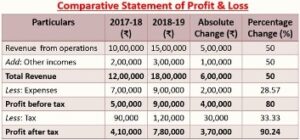
After adjustments are made, the book balance should equal the ending balance of the bank account. Bank charges are service charges and fees deducted for the bank’s processing of the business’s checking account margin of safety formula calculation example and faqs activity. If you’ve earned any interest on your bank account balance, it must be added to the cash account. Regularly reconciling your bank statements helps businesses detect potential issues with their financial recording system, making it easier to rectify those problems quickly. This can range from one-off errors such as calculation mistakes or double payments to major concerns like theft and fraud.
Ensures Financial Accuracy and Cash Flow
This process helps you monitor all of the cash inflows and outflows in your bank account. The reconciliation process also helps you identify fraud and other unauthorized cash transactions. As a result, it is critical for you to reconcile your bank account within a few days of receiving your bank statement. Bank reconciliation is the process of comparing accounting records to a bank statement to identify differences and make adjustments or corrections.
Where Do Non-Sufficient Funds (NSF) Checks Go on a Bank Reconciliation?

Since you’ve already adjusted the balances to account for common discrepancies, the numbers should be the same. To do this, businesses need to take into account bank charges, NSF checks, and errors in accounting. We’ll take bookkeeping completely off your hands (and deal with the bank reconciliations too). You can do a bank reconciliation when you receive how to calculate building depreciation your statement at the end of the month or using your online banking data. For the most part, how often you reconcile bank statements will depend on your volume of transactions.
Bank Statements: Types, Analysis, and Importance
If your company receives bank statements more frequently, for example, every week, you may also choose to do a bank reconciliation for every statement you receive. One is making a note in your cash book (faster to do, but less detailed), and the other is to prepare a bank reconciliation statement (takes longer, but more detailed). For example, a restaurant or a busy retail store both process a lot of transactions and take in a lot of cash.
Add bank-only transactions to your book balance
- Bank statements are more than just records of financial transactions; they are a window into the…
- The company can now take steps to rectify the mistakes and balance its statements.
- When your business issues a check to suppliers or creditors, these amounts are immediately recorded on the credit side of your cash book.
Therefore, an overdraft balance is treated as a negative figure on the bank reconciliation statement. After adjusting all the above items, you’ll end up with the adjusted balance as per the cash book, which must match the balance as per the passbook. Bank reconciliation helps to identify errors that can affect estimated tax payments and financial reporting. There’s nothing harmful about outstanding checks/withdrawals or outstanding deposits/receipts, so long as you keep track of them. Bank reconciliations are like a fail-safe for making sure your accounts receivable never get out of control.
Or there may be a delay when transferring money from one account to another. Or you could have written a NSF check (not sufficient funds) and recorded the amount normally in your books, without realizing there wasn’t insufficient balance and the check bounced. Regardless of how you do it, reconciling your bank account can be a priceless tool in your personal finance arsenal. In order to prepare a bank reconciliation statement, you’ll need to obtain both the current and the previous month’s bank statements as well as the cash book.
Income from variable sources like interest and investment may be difficult to predict. As such, exact amounts may not be accurately included on financial statements before the reconciliation process. When the business receives its bank statement, it can use the final amounts of interest and investment income to make adjustments and reconcile its financial statements. Once you recognizing unpaid salaries and wages in financial statements have identified all the differences between the two statements, identify the source of the discrepancy. A bank reconciliation statement can help you identify differences between your company’s bank and book balances.
Outstanding checks are those that have been written and recorded in the financial records of the business but have not yet cleared the bank account. This often happens when the checks are written in the last few days of the month. Your bank may collect interest and dividends on your behalf and credit such an amount to your bank account. Remember that transactions that aren’t accounted for in your bank statement won’t be as obvious as bank-only transactions.
No comment yet, add your voice below!